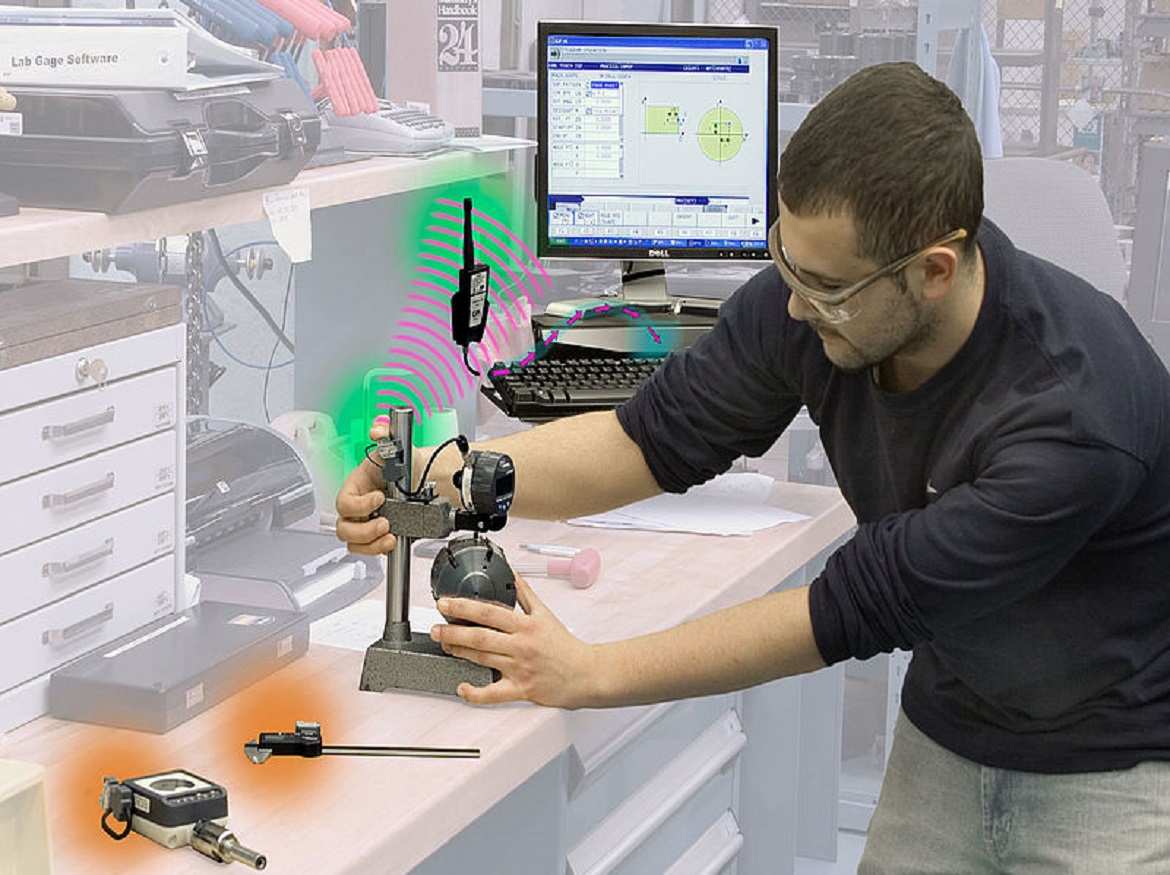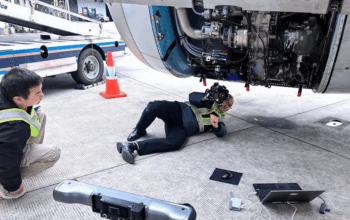When digital electronic indications first appeared in the early 1980s, observers anticipated that they would completely eclipse traditional dial indicators.
However, mechanical indicators still had other advantages and were still frequently specified by users, despite the obvious superiority of electronic indicators in terms of greater resolutions, better accuracy, and utility in statistical process control and data-gathering systems. However, today it seems as though digital is finally taking the lead, even though neither form is “better” than the other and the choice is dependent on the application and the user’s preferences.
The use of digital indicators for data collecting in process control is by far the most advantageous use. Digital indicators can output measurements straight to printers or SPC software, typically as an actual value, e.g., 20.00 mm, without any operator errors in reading or recording. The operator doesn’t even need to read the measurement; all he needs to do is set the workpiece in place and click a button. And in the last five years or so, this procedure has transitioned to wireless, removing the mess of cords and making gauges much more portable.
When using dial indicators, the operator must understand the position of the pointer to read the measurement, record it (often by hand), and then input the data into a computer. There are now three steps in which mistakes can and often do happen. Digital indicators are the sole option whenever data needs to be entered into a computer system.
Digital indicators used to be significantly more expensive than dial indicators, but today’s entry-level digital indicators offer additional standard features like auto-zeroing, actual values, in/mm switchable reporting, reversing of measuring direction, and data output. What was once a luxury item is now reasonably priced and offers a lot of value.
There is still something to be said for mechanical dial indicators, even with the economic advantage gone. The human brain is similar to an analogue system in many ways, and it can frequently process more data faster from an analogue readout. Even before the pointer has stopped moving, I’ve seen QC inspectors use dial indicators to routinely make precise go/no-go readings! They can quickly determine roughly where the cursor will stop, which is sufficient for many purposes. Approximation is not an option for digital displays. An LCD display’s elements may all be lighted, giving the impression that it is an eight when a digital gadget flickers between the numbers six and seven.
By resolving the pointer’s location to an accuracy of around one-fifth of the gage’s declared minimum graduation value, skilled operators can also “split grads” with dial indications. Additionally, the machinist can see where his process is going thanks to analogue dials. The user may be able to infer important information about the state of his tool if reading #1 shows 1/5 of a grade above zero, reading #2 is exactly zero, and reading #3 shows 1/5 of a grade below zero. In other words, dials are capable of conveying more details than just dimensional measurements. In all three instances, an early digital readout would have displayed zero, depriving the consumer of this extra information.
On the other hand, bench amplifiers used to be the only devices with resolutions as high as those of today’s digital indicators. Now that the “fifth of a grad” is a different digit on the indicator, it is possible to see the process change (provided, of course, that the gauge is capable of displaying data at the higher resolution of the display). In addition, a lot of modern digital indicators have an additional analogue display of some kind. Digital indicators become more “user-friendly” thanks to these electronic imitations of analogue performance, which help to reduce some of the cognitive drawbacks of digital displays and start to give the impression of direction and how far the item under inspection is from or above the part tolerance.
In fact, a lot of digital indicators are getting so strong that they are emulating the characteristics and functionality of bench amplifiers. Higher-end digital indicators frequently have capabilities like dynamic measurements, multiple variables, unilateral tolerances, several output formats, and micro-inch resolutions. And even though they may be expensive for digital indicators, they nevertheless cost just approximately 25% as much as a bench amplifier and probe.
Failure to detect when the pointer completes one or two full revolutions is a severe issue that dials indicator users frequently encounter. An operator who is not paying attention may think that parts that are blatantly out of tolerance are within tolerance. Digital indications, on the other hand, never go “back to zero,” completely removing this issue. In fact, the concept of returning to “0” or reading deviations is becoming obsolete as a result of the capacity to display the actual part size. Additionally, since out-of-tolerance dimensions can be signalled by all digital indications, the user need not make many actual decisions.
Despite initial scepticism, shop floor environments have shown digital indicators to be incredibly dependable. Since they often only have one moving part, they need to be cleaned less frequently than their mechanical cousins. Additionally, many now have IP ratings that specify what kind of environments, such as dust and water, they can be utilised in. Dial indicators don’t require batteries and can last practically forever with proper care. Finding someone that can fix dial indications is getting harder and harder to find, though.
Digital speedometers in automobiles were roundly rejected by the market in the 1980s. Today, however, there is a comeback of digital speedometers, tachometers, and other indicators due to the increasing number of people who have grown up in a digital world. The same is true for digital indications, which are finding more and more uses as operators get accustomed to them.
The performance and characteristics of bench amplifiers are increasingly being mimicked by several of the most recent digital indicators due to their increased power. Higher-end digital indicators frequently have capabilities like dynamic measurements, multiple variables, unilateral tolerances, several output formats, and micro-inch resolutions. And even though they may be expensive for digital indicators, they nevertheless cost just approximately 25% as much as a bench amplifier and probe.
Click on the following link Metrologically Speaking to read more such blogs about the Metrology Industry.









